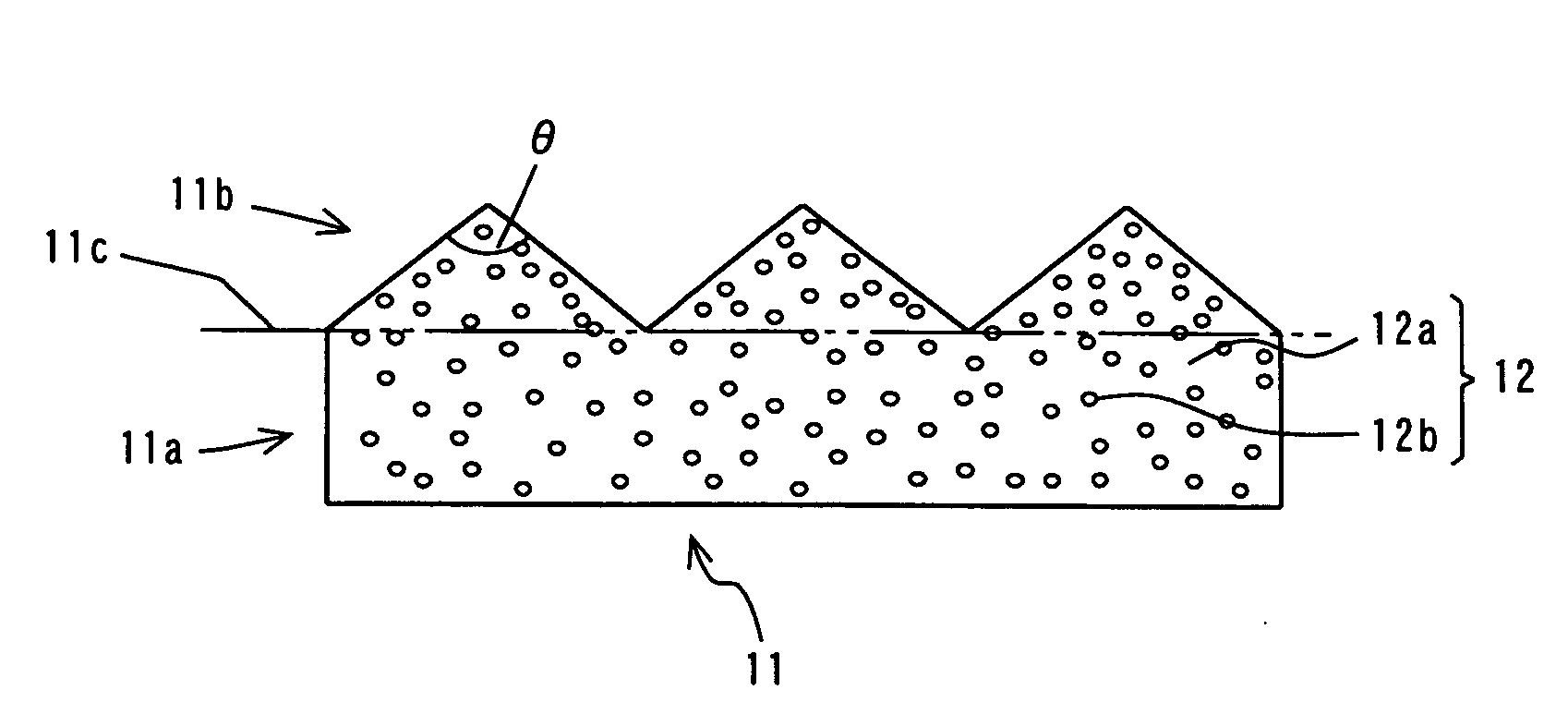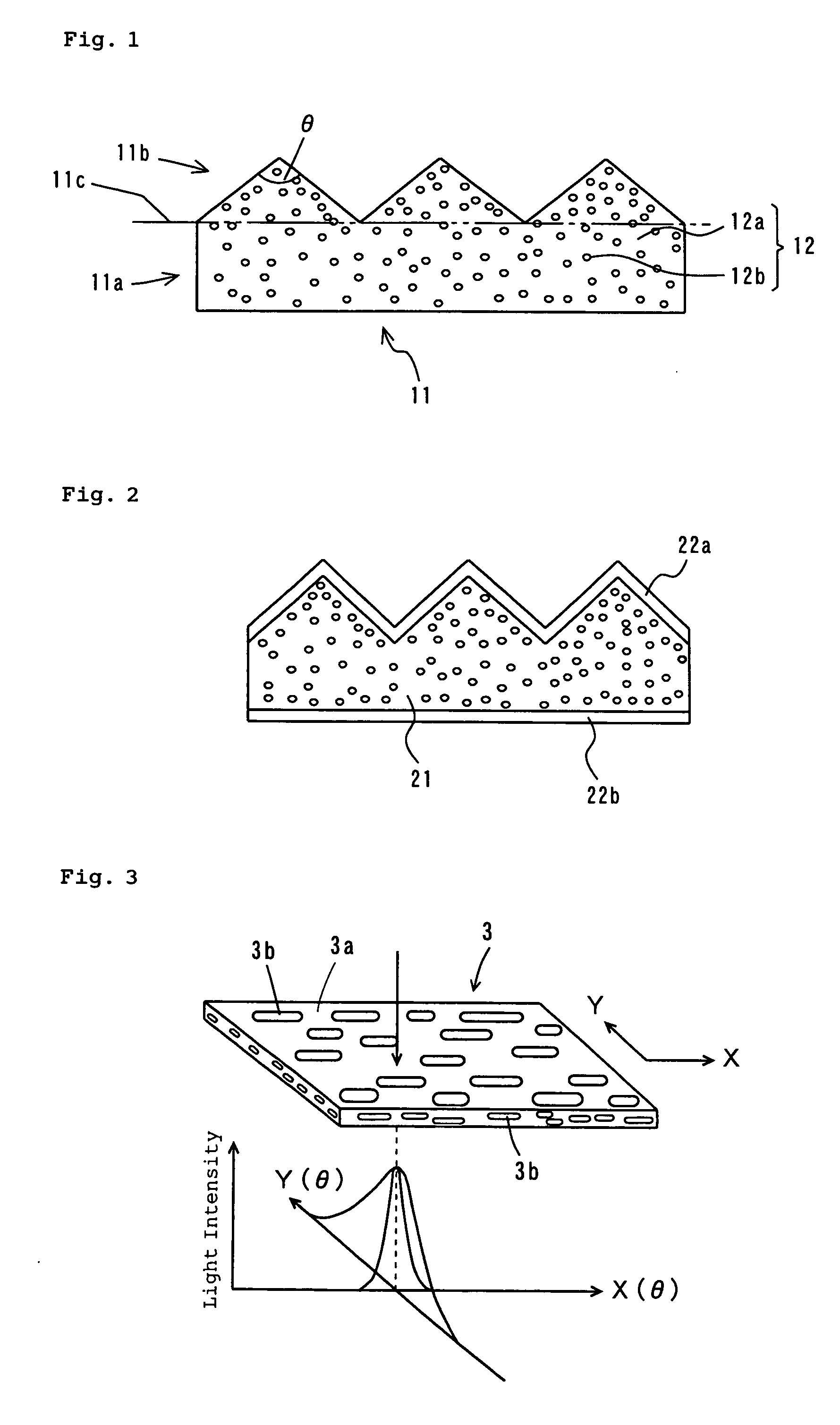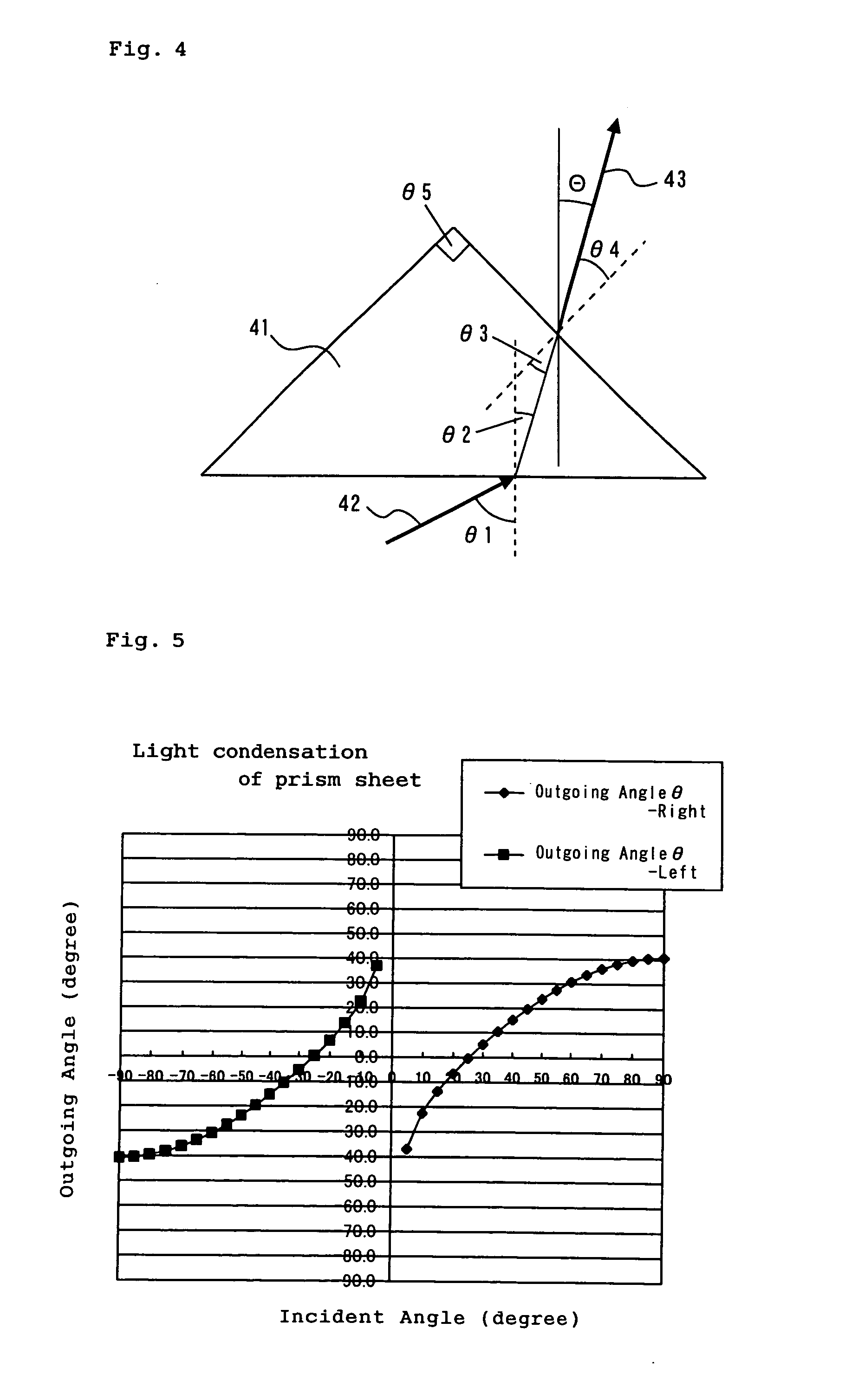Optical sheet
a technology of optical sheets and sheets, applied in the field of optical sheets, can solve the problems of insufficient preventive effects of using films alone, requiring a plurality of sheets, and producing interference patterns, and achieve the effect of enhancing luminance (or brightness)
- Summary
- Abstract
- Description
- Claims
- Application Information
AI Technical Summary
Benefits of technology
Problems solved by technology
Method used
Image
Examples
example 1
Production of Optical Sheet
[0153]The following components were used as raw materials for a semitransparent light-diffusion material: 95 parts by weight of a crystalline polypropylene-series resin PP (manufactured by Grand Polymer Co., F133, refractive index: 1.503) as a transparent resin, 4.75 parts by weight of a polystyrenic resin GPPS (a general-purpose polystyrenic resin, manufactured by Daicel Chemical Industries, Ltd., GPPSHRM10N, refractive index: 1.589) as a dispersed phase resin, and 0.25 part by weight of an epoxidized diene-series block copolymer resin (manufactured by Daicel Chemical Industries, Ltd., EPOFRIEND AT202; styrene / butadiene=70 / 30 (weight ratio), epoxy equivalent: 750, refractive index: 1.57) as a compatibilizer.
[0154]The above-mentioned raw materials were dried at 70° C. for about 4 hours, respectively, and kneaded in a Banbury mixer. Using a single-layer extruder, the resulting mixture was melted at about 220° C. and extruded from a T-die with a draw ratio o...
example 2
[0161]In the same manner as Example 1, a sheet having a diffusive anisotropy was produced and heat-pressed, provided that the heat-pressing was performed by making the top edge lines of the prisms of the metal mold approximately perpendicular to the take-up direction of the sheet having a thickness of 100 μm and a diffusive anisotropy. The obtained optical sheet was disposed on the light guide plate of the above-mentioned dismantled plane light source apparatus, and the lamp was turned on to measure a luminance distribution. The bright line and dark line were visually observed, provided that a direction parallel to the top edge lines of the prism units of the optical sheet corresponded to the lateral direction of the plane light source device. The observation of the bright line and the dark line and the evaluation results of the front luminance and the width of the luminance distribution are shown in Table 1.
example 3
[0164]The raw materials for a semitransparent light-diffusion material of Example 1 and the crystalline polypropylene-series resin PP as a transparent resin for surface layers were used. The raw materials and the transparent layer resin component were dried at 70° C. for about 4 hours, respectively, and kneaded in a Banbury mixer. Using a multi-layer extruder, the raw materials and the transparent layer resin component as surface layers were melted at about 220° C. and extruded from a T-die with a draw ratio of about 3 onto a cooling or chilling drum having a surface temperature of 60° C. to give a three-layered sheet (thickness: 180 μm) comprising two kinds materials. The sheet had a central layer having a thickness of 90 μm (a layer comprising the diffusive transparent material) and two surface layers (transparent resin layers) laminated on both surfaces thereof, respectively, each having a thickness of 30 μm, that is, a three-layered sheet comprising a transparent layer, a light ...
PUM
| Property | Measurement | Unit |
|---|---|---|
| vertex angle | aaaaa | aaaaa |
| height | aaaaa | aaaaa |
| thickness | aaaaa | aaaaa |
Abstract
Description
Claims
Application Information
 Login to View More
Login to View More - R&D
- Intellectual Property
- Life Sciences
- Materials
- Tech Scout
- Unparalleled Data Quality
- Higher Quality Content
- 60% Fewer Hallucinations
Browse by: Latest US Patents, China's latest patents, Technical Efficacy Thesaurus, Application Domain, Technology Topic, Popular Technical Reports.
© 2025 PatSnap. All rights reserved.Legal|Privacy policy|Modern Slavery Act Transparency Statement|Sitemap|About US| Contact US: help@patsnap.com



